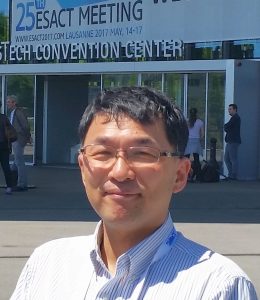Home > About JAACT
About JAACT
Message from the President

Professor Takeshi Omasa (Osaka University), President of the Japanese Association for Animal Cell Technology
It has been my pleasure to serve as President of JAACT since 2019.
In April 2019, I was appointed as the 15th (9th) President of the Japanese Association for Animal Cell Technology (JAACT). It was back in 1989 when I attended a first international symposium held in Tsukuba as a graduate student. Since then, for more than 30 years, I have been involved in the field of animal cell engineering, an increasingly specialized discipline of biochemical engineering.
One of the explicit goals in our society’s mission statement is “the advancement and dissemination of animal cell technologies” focusing on “advanced industry-academia collaboration”, “international and interdisciplinary”, “supporting industrial activities”, and “science and engineering for practical use”. The two research tenets of JAACT are “Food and Health” and “Biologics Production” and hence, we provide a platform for active discussions via various international and national meetings and symposia.
Animal cell technology is an interdisciplinary research field converging disciplines such as biotechnology, agricultural chemistry, cell biology, and biochemical engineering. Particularly, the science, technology, and engineering of animal cells is expanding rapidly with the development of biotechnology in the 21st century.
To realize these goals, I have outlined the following supporting activities as our key organizational priorities:
1. Information sharing among members of the society
We will begin an e-newsletter that is fully packed with interesting, easy-to-read synopses and links for all JAACT members to access at their convenience.
Since innovative technologies in animal cell are also evolving on a global scale, we will create more opportunities for members to exchange and use information on research trends, not only through domestic symposia but also via a variety of foreign exchange programs in Europe, USA, and Asia using the ESACT and AFOB (Asian Federation of Biotechnology) as the networking partners.
2. Unity among members and excellent team work
We will encourage members to propose more innovative research project ideas within the JAACT society as well as with non-JAACT societies, to cultivate greater collaboration and innovation among the research communities.
3. Young researcher support
The average age of JAACT members is increasing due to declining birthrate and aging population. Therefore, we will actively engage and revitalize our young researchers through various robust research activities and increase the number of younger members.
As the president of JAACT, I sincerely invite our members to actively participate in all the upcoming.
The Goals of the Japanese Association for Animal Cell Technology
It is widely said that the core of 21st-century science will be “life”. The Japanese Association for Animal Cell Technology (JAACT) is an arena for the exchange of academic information by researchers and engineers specializing in science and technology concerning animal cells, which is the basic unit of this “life”. The academic field covered by JAACT centers around animal cells, ranging from cell cultivation and analysis of cell characteristics to production and control of useful materials, cell therapy and the creation of artificial cells. In other words, it covers all the areas, applied and basic, for making animal cells contribute to supporting a healthy, normal life. For the development of these areas, JAACT is involved in various activities by indicating 1) state-of-the-art and industry-academia cooperation and 2) “international” and “interdisciplinary” as the basic principles behind the management of JAACT. Above all, the annual international meeting is the main feature of our activities. It greatly contributes to the development of animal cell technology, which has been given considerable hope from the world as the core of life science and technology. JAACT eagerly hopes to have the participation of researchers and engineers from the fields of science, engineering, agriculture, medicine and pharmacology, who are interested in animal cells.
